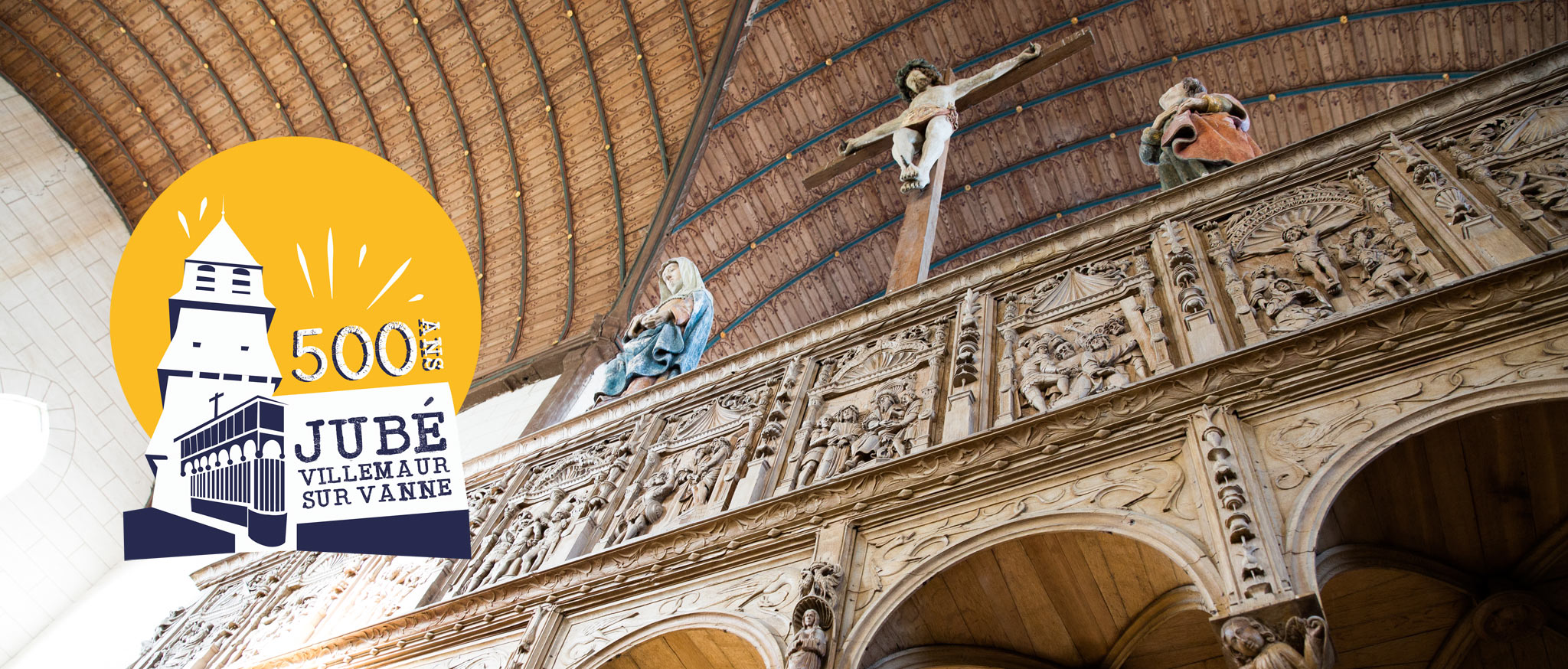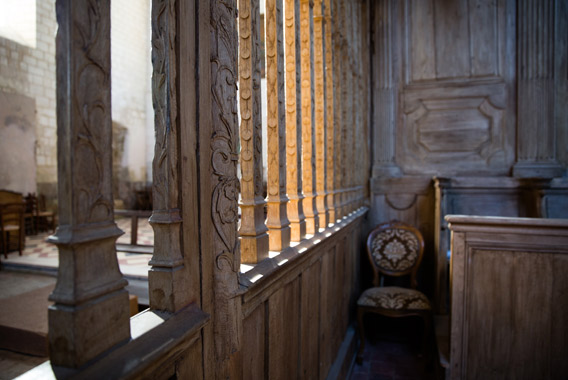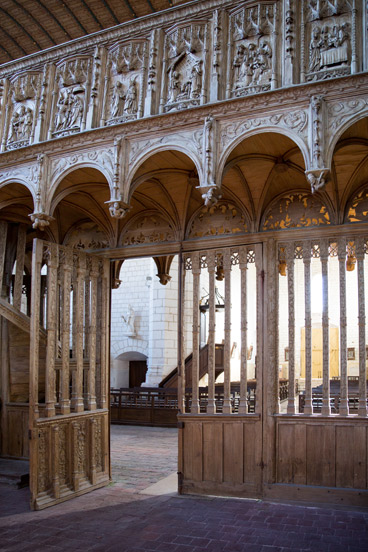
In the 13th century, the fortified town of Villemaur-sur-Vanne was an important trading centre, with four annual fairs. The Collegiate Church of Notre-Dame housed up to nine canons. This Collegiate Church is the main remaining trace of this period. It stands out in the landscape with its 33-metre high bell tower covered with chestnut shingles dating from the 16th century. In the Collegiate Church of Villemaur-sur-Vanne stands a wooden rood screen built by two companions, the Guyon Brothers, in 1521. Almost 5 centuries later, the decorations and engravings are still intact. The rood screen of Villemaur-sur-Vanne is very representative of 16th century Champagne sculpture. It bears witness to the wealth of the religious heritage of the Aube. Today it is one of the last and most beautiful carved wooden rood screens in France.

The Villemaur rood screen, a unique piece of Champagne sculpture
The rood screen of Villemaur-sur-Vanne is one of the most remarkable pieces of Renaissance sculpture in Champagne. Decorated with twenty-two wooden panels dedicated to the Life of the Virgin and to the Passion of Christ, it is the only work of this type preserved in France. To create these sculpted bas-reliefs, the Champagne sculptors mainly used German engravings by Albrecht Dürer and Schongauer as models. The rood screen, designed by the brothers Thomas and Jacques Guyon, sculptors and master carpenters from Champagne, was completed in 1521. The Guyon brothers shared the work: the eldest, Thomas, decorated the choir loft, dedicated to the eleven scenes of the Life of the Virgin. He treated his works with a realism that was still very mediaeval, in the Flemish style, recognisable by its curled cabbages, its Gothic pinnacles and its flamboyant canopies. The youngest, James, was more subject to Italian influences and depicted the Passion of Christ throughout the panels facing the nave.
In 1857, at the request of the Monuments Historiques, the rood screen was restored by the Trojan sculptor Valtat. This restoration was nevertheless limited to the decorative parts, as noted by the Monuments Historiques inspector in 1895. In 1907, the commune of Villemaur considered selling the rood screen to finance the installation of a water pipe. The panels were dismantled, but they were quickly put back in place, as the ministry had refused to sell the monument. The eleven scenes from the Life of the Virgin, on the choir side, are surrounded by a flamboyant frame, while those from the Passion, on the nave side, are associated with an Italianate decoration. From the antiquisite ornamental motifs on the West side of the balustrade to the flamboyant decoration on the East side, the rood screen is interesting in that it shows a very intermediate stylistic position. The sculptors drew both on a traditional decorative repertoire established at the end of the 15thcentury and the beginning of the 16thcentury, and on the ornamental vocabulary, rich in new elements: volutes and mediaeval, medallions supported by winged mediaeval, arabesques on the closing bars and the openwork staircase. The Italianate framing of the scenes by a base, columns, pinnacles and the crowning, gives each scene represented a theatrical character to the rood screen, and their composition is curiously reminiscent of the bands of certain books printed at the beginning of the 16thcentury.

Numerous events to celebrate the 500th anniversary of the Villemaur rood screen
To mark the 500th anniversary of the rood screen of the Collegiate Church of Villemaur-sur-Vanne, the new Commune of Aix-Villemaur-Pâlis, together with the Tourist Association of the Aube and the Tourist Office of the Pays d’Othe et d’Armance, have decided to organise festivities, for the first time, which will take place over three weekends: 3and 4 July 2021, 14 and 15 August 2021 and finally 18 and 19 September 2021.They will focus on a mediaeval theme recalling the historical universe of the rood screen and the Collegiate Church of Villemaur-sur-Vanne. The events will take place both inside and outside the Collegiate Church. Outside, there will be workshops and exhibitions, stalls of local artisans and traders, as well as entertainment and shows for both the young and the old (mediaeval entertainment, falconry show, fire-eaters, horse show with the Cavaliers du Centaure, sound and light show, fireworks…), which will punctuate these three weekends. Not forgetting the catering available on site, in Food Trucks but also themed meals (on reservation) at the local restaurant “Le Champenois”. In the Collegiate Church, there will be guided and commented tours (with a guide, or at night with a narration by Christian Brendel), conferences, exhibitions and even concerts (organ concert, Tambours et Cuivres de Nouvelle France…) for small groups of 15 people maximum.
In order to respect the sanitary protocol, the guided tours of the Collegiate Church and the lectures will be free of charge upon reservation.

